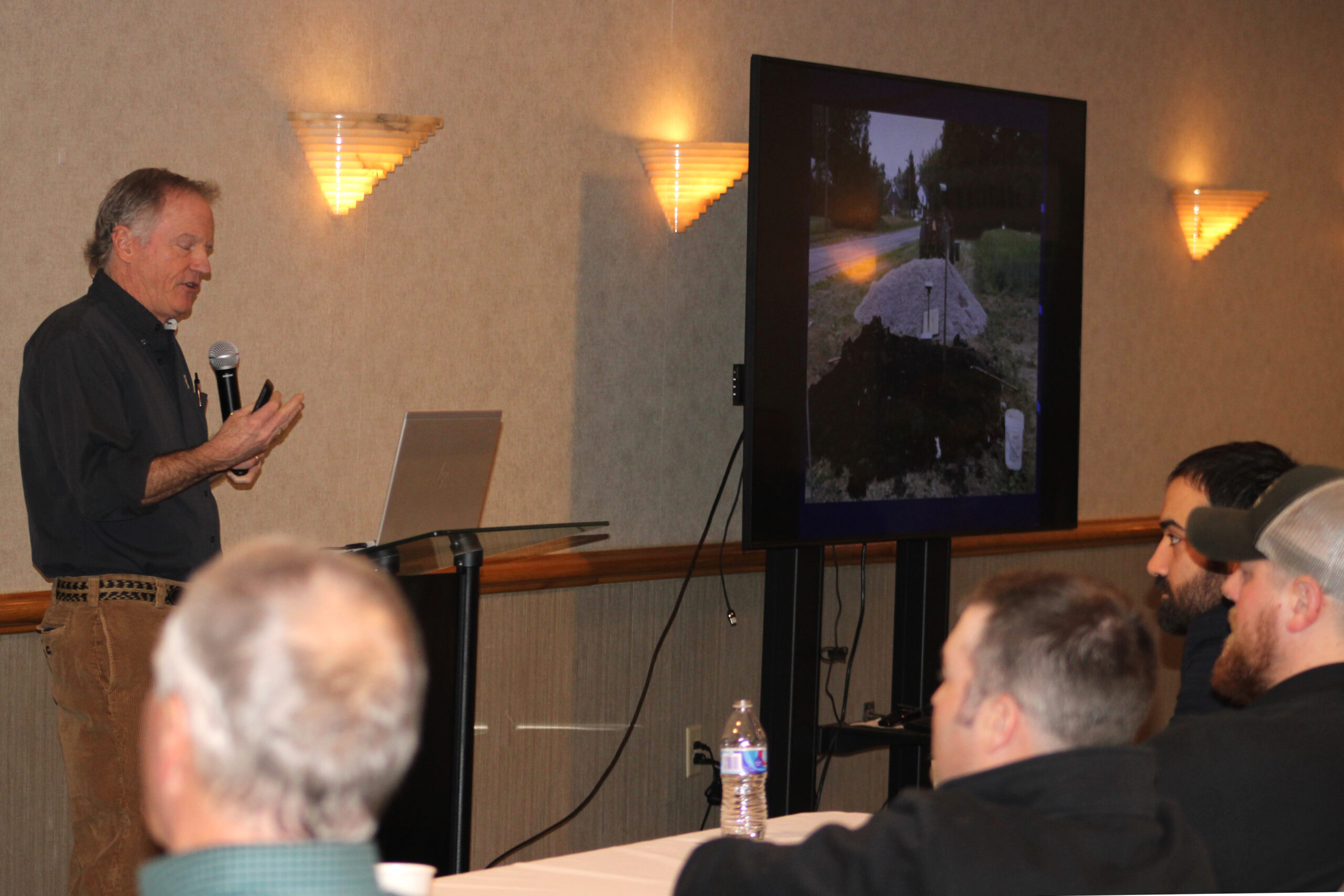
The agricultural industry must learn whether “forever” chemicals contaminate pesticide containers, an expert warned during a Monday conference in Presque Isle.
More than 80 growers, industry representatives and scientists gathered for the UMaine Cooperative Extension’s Potato Health Conference.
As Maine works to tighten restrictions around per- and polyfluoroalkyl substances, or PFAS, agricultural producers should learn whether pesticide containers may contain the chemicals. A large part of the agricultural industry depends on additives to battle insects like the Colorado potato beetle. How those pesticides are packaged has become a new concern.
“We have to get our hands around contaminated containers,” said Pam Bryer, a toxicologist with the Maine Board of Pesticides Control, part of the Maine Department of Agriculture, Conservation and Forestry. “It was such a surprise, this container issue. Nobody saw this coming.”
PFAS are used in everything from food packaging to cleaning supplies and are known health hazards. After being found in soil and water, some Maine farms shuttered. The chemicals have also been found in wastewater sludge, which for years was spread on fields as a fertilizer.
It’s important to keep learning about the substances because the issue is so complex, Bryer said. What’s more, packaging may be different for each product.
Maine is now working to determine if crop additive packages are treated with fluorine, Bryer said.
The U.S. Department of Environmental Protection is also studying the issue. In 2022, the department determined some mosquito repellents contained PFAS that were produced by a chemical reaction with fluorine-coated containers, according to an EPA report.
After further study, the department found liquid products in high-density polyethylene containers that had been treated with fluorine could leach PFAS into pesticides, the report stated.
Bryer does not know of any specific products farmers should avoid, but encouraged growers to reach out to their pesticide vendors to ask about packaging ingredients.
Other topics at the conference included UMaine Soil and Water Specialist John Jemison discussing several research projects his team had done regarding improving potato yield and quality. One study determined manure added to soil added nitrogen and tended to boost yield, particularly in drier growing years.
Another study investigated cover crops and their effects on potato yield. Test plots used mustard, canola and barley. Mustard proved to boost yield most, Jemison said.
Potatoes grown after a mustard planting also had fewer instances of black scurf, he said.
Black scurf, or rhizoctonia disease, is a fungus that causes black spots on tubers and can diminish plant growth, according to an Extension bulletin.
Cover crops are beneficial to soil and crop health, but when not combined with other methods like fertilizers will take years to work, Jemison said.
“The role of cover crops will always be to protect soil health,” he said. “It does take decades to see results if cover crops are your only method.”
The conference also highlighted research from UMaine crop scientists, including insect control, integrated pest management and volunteer potatoes — those that grow from plants left over from last year’s crop.







